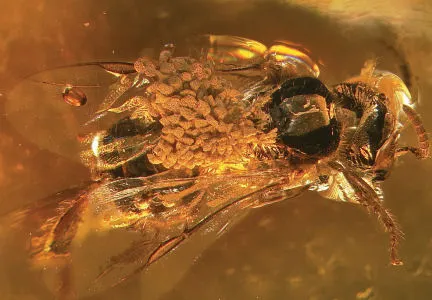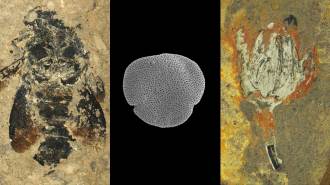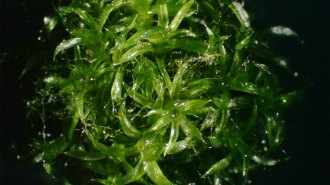The first undisputed fossil of an orchid part has enabled scientists to estimate that the prized flowers appeared on the botanical scene around 80 million years ago.

With more than 25,000 species, orchids are the largest and most diverse group of flowering plants. Although most are found in the tropics, orchids grow on every continent except Antarctica and in every habitat except deserts. Scientists have assessed genetic differences among a variety of orchid species to develop a family tree that includes five subgroups.
An absence of orchid fossils, however, has prevented researchers from putting dates on the family tree by calibrating orchids’ mutation rates, says Santiago R. Ramírez, an evolutionary biologist at Harvard University. The pollen and dust-grain-size seeds of orchids are thin walled and typically don’t fossilize well, and many of the orchids’ leaves resemble those of other plants.
Now, in the Aug. 30 Nature, Ramírez and his colleagues describe the first fossil that definitely comes from an orchid. The 1-millimeter-long fragment of a pollen-bearing structure, or pollinarium, rests on the back of a stingless bee that became trapped in amber about 15 million to 20 million years ago. Amber, a hardened form of tree sap, is one of the few substances that can preserve delicate fossils such as feathers (SN: 3/30/02, p. 202) and spider silk (SN: 8/30/03, p. 141).
Because the pollinarium fragment appears to be stuck in the middle of the bee’s back, the researchers speculate that the insect had to crawl into the orchid’s flower to pollinate it. That would suggest that the flower was long and tubular, says Ramírez.
Characteristics of the pollinarium fragment place the ancient orchid in the subgroup Goodyerinae. That classification enabled the researchers to estimate that the ancestor of all modern orchids appeared between 84 million and 76 million years ago. Other teams’ estimates of the orchid group’s age have ranged from 26 million to 110 million years.
“This is pretty darn neat,” says Norris H. Williams, a botanist at the University of Florida in Gainesville. “Finally, we’ve got a fossil that gives us a good date.”
“This is a really exciting [finding],” echoes Kenneth M. Cameron, an orchid specialist at the New York Botanical Garden in New York City. “A lot of us have been waiting for a piece of evidence like this for a long time,” he says.
A few years ago, when producers of the BBC series Walking with Dinosaurs were filming the jungle backgrounds for their animations, they took special care to exclude orchids or other plants thought to have evolved after the dinosaurs had died out, says Mark W. Chase, an orchidologist at the Royal Botanic Gardens in Kew, England. The fact that Ramírez and his colleagues have now found that the showy flowers lived alongside dinosaurs “is pretty funny,” says Chase. “Maybe [the BBC] should go back and add a few orchids in there after all.”






